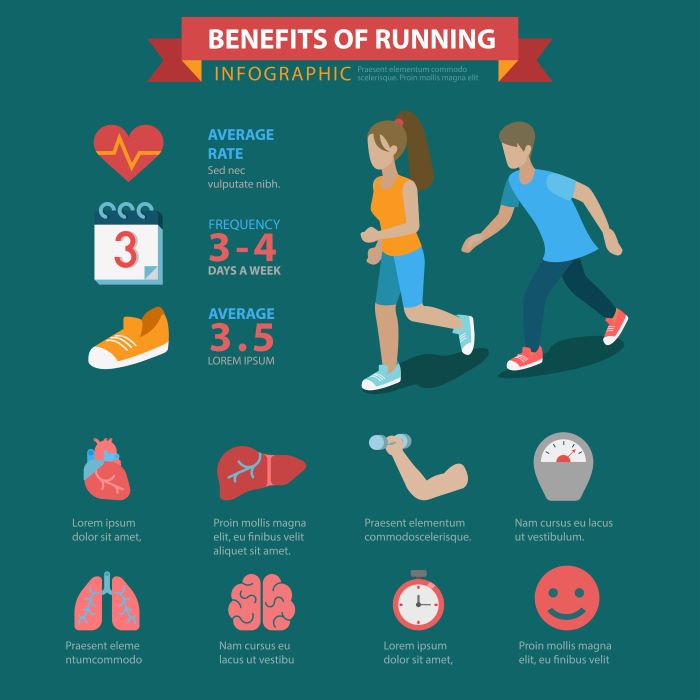Running on a track is not just about putting one foot in front of the other; it’s about maximizing your performance with every lap. Whether you’re a seasoned athlete or a beginner looking to improve your speed and endurance, running track workouts offer structured training that helps achieve your fitness goals efficiently. The circular nature of a track allows for consistent pacing, making it easier to monitor your progress and push your limits.
Track workouts can vary widely, but they generally focus on specific objectives such as:
- Speed Work: Short bursts of high-intensity runs that build your maximum speed.
- Interval Training: Alternating between fast sprints and slower recovery runs to enhance stamina.
- Tempo Runs: Sustained efforts at a challenging but manageable pace to improve your threshold.
- Long Runs: Extended distances to build endurance and mental toughness.
Engaging in these workouts not only boosts your physical capabilities but also contributes to a stronger mental game. The vibrant atmosphere of a running track can inspire camaraderie and motivation, especially when you join a community of fellow runners. Want to explore more about how to elevate your performance with the best running track workouts? Visit our website to learn more and get started today! Click here.
Benefits of Structured Track Workouts for Runners

Structured track workouts offer a plethora of benefits for runners, making them an essential component of any training regimen. Unlike casual runs, these workouts provide a focused environment where specific goals can be targeted, resulting in measurable improvements over time.
Some of the key benefits include:
- Improved Speed: Track workouts are designed to challenge your speed and running economy. By incorporating intervals and sprinting sessions, you can develop a faster pace, which is crucial for competitive runners.
- Enhanced Endurance: Many track workouts focus on longer repetitions, allowing you to build aerobic endurance. This is especially beneficial for those training for races, as it prepares your body to sustain performance over extended distances.
- Injury Prevention: The controlled environment of a track allows for better monitoring of your form and technique. This can help in identifying any issues early on, reducing the risk of injuries associated with improper running mechanics.
- Time Efficiency: Structured workouts often take less time than a long, unstructured run. You can achieve substantial fitness gains in a concentrated session, making it easier to fit into a busy schedule.
- Motivation and Accountability: When you train on a track, especially in a group setting, the sense of community can enhance motivation. The shared experience of pushing through tough workouts with fellow runners creates a supportive environment.
Incorporating structured track workouts into your routine can transform your running experience, leading to significant performance gains and a deeper appreciation for the sport.
Essential Warm-Up Exercises for Track Workouts

Warming up before engaging in track workouts is a crucial step that should never be overlooked. Proper warm-up exercises prepare your body for the intense physical activity ahead, reducing the risk of injury and improving overall performance. Here are some essential warm-up exercises to incorporate into your routine:
- Dynamic Stretching: Unlike static stretching, dynamic stretching involves moving parts of your body through their full range of motion. Exercises such as leg swings, arm circles, and torso twists help increase blood flow to your muscles and improve flexibility.
- High Knees: This exercise elevates your heart rate while engaging your hip flexors and quadriceps. As you jog in place, lift your knees high towards your chest, alternating legs rapidly for 30 seconds to one minute.
- Butt Kicks: A great way to activate your hamstrings, butt kicks involve jogging in place while kicking your heels towards your glutes. This exercise helps promote proper running form and warms up the posterior chain.
- Strides: Incorporating a few strides into your warm-up routine can help you transition from static movements to the speed required for track workouts. Gradually accelerate to about 80% of your maximum effort over 50-100 meters, then slow back down to a jog.
- Skipping: Skipping not only warms up your legs but also engages your core and improves coordination. Perform a few sets of skips, focusing on lifting your knees and swinging your arms in rhythm.
By implementing these warm-up exercises prior to your track workouts, you’ll ensure that your muscles are primed and ready for action, helping you maximize performance and enjoy each running session to its fullest.
Top Running Track Workouts for Speed and Endurance
To elevate your running performance, incorporating specific workouts that focus on both speed and endurance is essential. The best running track workouts are designed to push your limits while enhancing your overall fitness. Here are some top workouts to consider:
- Interval Training: This workout alternates between high-intensity sprints and recovery periods. For example, sprint for 400 meters at maximum effort, followed by a 200-meter jog. Repeat this cycle 4-6 times. This method boosts your speed while increasing cardiovascular endurance.
- Fartlek Training: A Swedish term meaning “speed play,” fartlek training combines continuous running with bursts of speed. During a 30-minute run, incorporate short sprints of 30 seconds to 2 minutes at various intervals. This workout improves both aerobic and anaerobic capacity.
- Tempo Runs: These runs help build your lactate threshold, allowing you to sustain a faster pace for longer. After a warm-up, run at a comfortably hard pace for 20-30 minutes, then cool down. Aim to maintain a pace that feels challenging but not exhausting.
- Long Runs: Essential for building endurance, a long run should be done once a week. Gradually increase your distance, aiming for 60-90 minutes of running at a steady pace. This workout enhances your stamina and prepares you for longer races.
- Hill Repeats: Find a steep hill and sprint up for 30 seconds, then walk or jog back down for recovery. Repeat this for 6-10 repetitions. Hill repeats effectively build leg strength and improve running economy.
Incorporating these workouts into your training regimen will not only enhance your speed but also boost your endurance, ensuring that you’re well-prepared for any race or running challenge you take on.
Incorporating Interval Training into Your Track Routine

Interval training is a powerful technique for runners looking to improve speed and performance on the track. By alternating periods of intense effort with periods of rest or low-intensity activity, you can push your body beyond its limits and enhance both your aerobic and anaerobic capacities. Here’s how to effectively incorporate interval training into your track routine:
- Start with a Warm-Up: Always begin with a dynamic warm-up to prepare your muscles and joints for the workout. Spend at least 10-15 minutes jogging, followed by dynamic stretches such as leg swings and high knees.
- Choose Your Intervals: Determine the length and intensity of your intervals based on your fitness level. Common formats include 400 meters (1 lap) at sprint pace followed by a 200-meter recovery jog. Alternatively, you can opt for time-based intervals, such as 1 minute of sprinting followed by 2 minutes of walking.
- Monitor Your Pace: Use a stopwatch or a running app to track your interval times. It’s crucial to maintain a consistent pace during your sprints. Try to keep your speed high enough to feel challenged but not so fast that your form suffers.
- Include Recovery Periods: Recovery is just as important as the intervals themselves. Ensure that you allow adequate time to recover between sprints, generally 1-2 minutes, depending on the workout’s intensity. This allows your heart rate to lower and prepares you for the next interval.
- Gradual Progression: As you become accustomed to interval training, gradually increase the intensity or duration of your sprints. You can also add more repetitions over time to enhance your endurance and speed further.
Incorporating interval training into your track routine can lead to significant improvements in running performance. With consistency and dedication, you’ll find yourself hitting new personal bests in no time.
Cool Down and Recovery Techniques After Track Workouts

After an intense track workout, it’s essential to focus on cool down and recovery techniques to effectively aid your body’s transition from high-intensity exercise to rest. Proper cooldowns can prevent stiffness, reduce muscle soreness, and enhance overall recovery. Here are some effective methods:
- Static Stretching: Once you’ve completed your workout, spend 10-15 minutes performing static stretches. Focus on major muscle groups such as hamstrings, quadriceps, calves, and hip flexors. Stretching helps improve flexibility and can alleviate tightness.
- Foam Rolling: Incorporate foam rolling into your recovery routine to release tension in your muscles. Spend a few minutes rolling over areas that feel tight or sore, helping to increase blood flow and promote healing.
- Hydrate: Replenishing lost fluids is crucial after a workout. Drink water or a sports drink to restore electrolytes and maintain optimal hydration levels, aiding in recovery and performance.
- Nutrition: Fuel your body with a balanced meal or snack post-workout, ideally within 30 minutes. Include a mix of carbohydrates and protein to help repair muscle tissue and replenish glycogen stores.
- Active Recovery: On days following intense workouts, consider engaging in low-intensity activities such as walking, cycling, or swimming. This promotes circulation and helps in muscle recovery without adding strain.
By incorporating these cooldown and recovery techniques into your routine, you can ensure your body is ready for the next workout. Embrace the joy of running and discover a community that supports your fitness journey! Visit our website to learn more and get started today! Click here.


